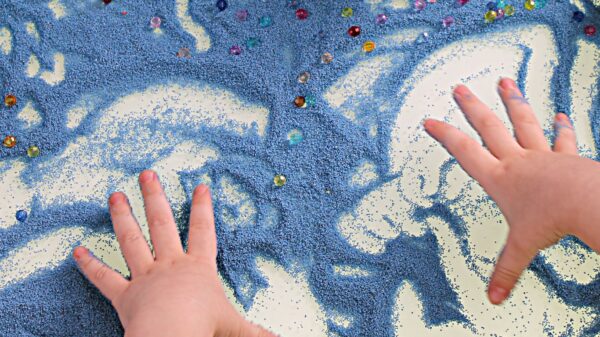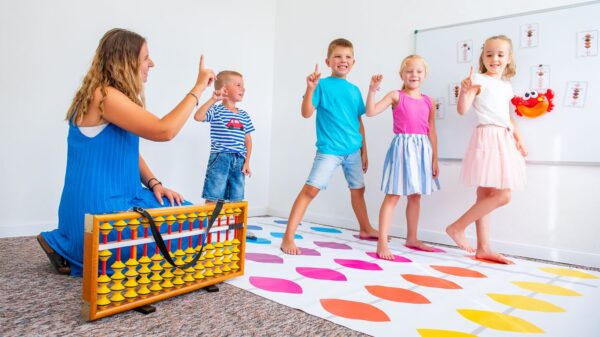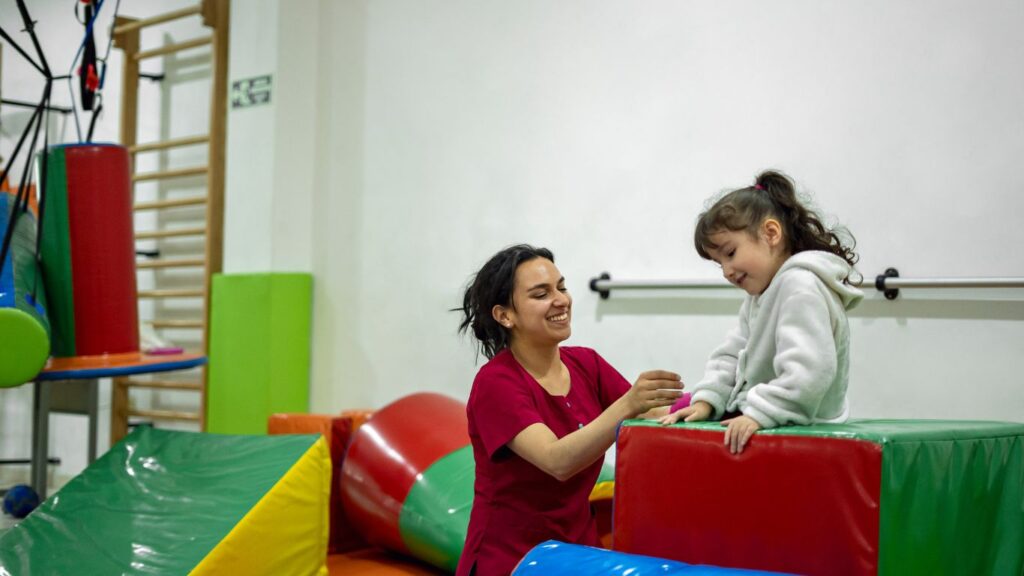Children with autism often navigate unique challenges in their daily lives, from sensory processing and motor skills to building social connections. These hurdles can make it tough to take part in everyday activities or feel fully connected to their surroundings.
That’s where occupational therapy (OT) comes in. It’s a personalized, hands-on approach that helps kids develop skills, gain independence, and enjoy the activities that matter most to them.
At The Clubhouse, we’re passionate about providing occupational therapy services designed specifically for children with autism, giving them the support they need to thrive.
Here’s How We Can Help Your Kid Succeed!
Activity Analysis and Adaptation
Occupational therapists dive into the activities and routines kids do, figuring out what skills are needed to make them happen. Climbing stairs? That takes balance, strength, and coordination. Writing with a pencil? That’s about fine motor skills and hand-eye coordination.
Breaking Down Complex Tasks into Smaller Steps
Breaking larger, overwhelming tasks into smaller, manageable steps can make a world of difference. Research even shows that this approach helps kids with autism gain more independence in daily activities.
For example, instead of saying “Get dressed,” a therapist might guide a child step by step—first putting on socks, then shoes, and finally zipping up their jacket. This way, each small success builds confidence and makes the whole process feel more doable. It’s a simple, compassionate way to support growth and independence.
Modifying the Physical Environment
Sometimes, the environment can make it harder for a child to succeed. Occupational therapists often look for ways to adjust surroundings to better support a child’s needs.
For example, they might recommend using a stabilizing cushion to help a child sit comfortably during meals or rearranging a classroom to reduce distractions and improve focus.
Small changes like these can make a big difference, helping children feel more at ease and able to fully participate in their daily activities.
Adjusting the Difficulty Level of Activities
Every child grows and learns at their own pace, and occupational therapists understand how important it is to meet them where they are. That’s why they use the Just-Right Challenge approach, which is making activities tough enough to encourage progress but still manageable to avoid frustration.
This method helps kids stay motivated and build their skills step by step. For example, if a child finds tying shoelaces hard, the therapist might start with an easier task, like practicing knots with a thicker rope, then slowly work toward lacing shoes.
It’s all about creating a safe, supportive space for learning and building confidence along the way.
Adaptive Equipment and Assistive Technology
Adaptive equipment and assistive technology can truly empower children, helping them build independence and confidence in their daily lives. Occupational therapists (OTs) are key to this process, guiding kids in using these tools and making everyday tasks feel more manageable.
Mobility Aids Like Walkers, Canes, and Wheelchairs
For kids with physical disabilities or mobility challenges, tools like walkers, canes, and wheelchairs can make a world of difference. They offer a safe and reliable way to move around more freely and gain independence.
These aids don’t just improve mobility, they also help kids feel more confident and included in activities at school and in their communities. Occupational therapists work closely with each child to find the right fit, teaching them how to use these devices comfortably and safely, so they can move through their world with confidence.
Adaptive Utensils with Built-Up Handles
For kids with fine motor challenges or conditions like cerebral palsy, using regular utensils can be a real struggle. Adaptive utensils, like ones with bigger handles or angled designs, can make a huge difference. They’re easier to grip and can turn mealtimes into a more enjoyable experience.
Research shows these adaptive utensils can reduce challenges and help kids build important self-feeding skills over time.
Specially Designed Clothing with Easier Closures
For kids with limited dexterity, things like buttons, zippers, and laces can feel frustrating and overwhelming. That’s where adaptive clothing comes in.
Simple changes like Velcro closures, magnetic snaps, or elastic waistbands can make a world of difference. These designs help kids gain independence with dressing, a big and exciting milestone for so many.
Environmental Modification

Occupational therapists (OTs) play an important role in helping kids with Autism Spectrum Disorder (ASD) feel safe and comfortable in their environment. By making changes to a child’s surroundings, OTs can reduce stress, improve focus, and make daily activities easier and more enjoyable.
Sensory-Friendly Spaces
Kids with ASD often struggle with sensory challenges, which can make certain places feel overwhelming. That’s where OTs step in, they help create sensory-friendly environments by using calming lighting, reducing loud noises, and adding tools like weighted blankets or fidget toys.
Research published in Frontiers in Psychology journal shows that these simple changes can ease anxiety and help kids engage more. By tailoring spaces to fit a child’s sensory needs, therapists create a sense of comfort and safety, making it easier for them to participate and thrive.
Visual Supports and Organization
Creating a well-organized environment is key to helping children feel less overwhelmed and more independent. Occupational therapists often use tools like visual schedules, labeled storage, and clear routines to provide structure and clarity.
Research shows that visual supports can help kids with ASD complete tasks more easily and improve their behavior. By making their surroundings predictable and easy to navigate, OTs give kids the comfort and confidence they need to thrive.
Classroom & Home Modifications
For children with ASD, the right environment can make a world of difference, whether at school or home. In classrooms, small but thoughtful changes can go a long way in supporting their learning.
Occupational therapists (OTs) often work with teachers to implement adjustments like placing seats away from distractions, creating quiet zones, or tailoring tasks to a child’s abilities.
At home, safety is often the top concern, especially for children who may engage in sensory-seeking behaviors or have limited awareness of danger. OTs collaborate with families to make the home environment safer and more manageable.
This might include securing furniture to prevent tipping, adding locks to windows and doors, or setting up designated spaces for play and relaxation.
Sensory Integration Therapy
In sensory integration therapy, a therapist works with your child through different sensory activities in a fun and structured way. These activities are often play-based and designed to either calm or stimulate specific senses like touch, smell, or movement.
Tactile Activities
Tactile activities are a wonderful way to help kids with sensory challenges feel more comfortable with touch. Things like playing with sand or slime, feeling different fabrics, or even fun activities like finger painting or kneading dough can make a big difference.
By gradually introducing them to various textures in a gentle and supportive way, we can help them build tolerance and feel more at ease with touch in daily life. The goal is to make these moments fun and empowering, so they can grow more confident and less sensitive over time.
Vestibular and Proprioceptive Input
Vestibular and proprioceptive activities are all about helping kids improve their balance and spatial awareness. These activities often include fun, movement-based exercises like swinging, spinning, jumping, or climbing.
The vestibular system, located in the inner ear, plays a big role in balance and motion, while proprioception is the body’s natural way of sensing where it is and how it’s moving.
By gently engaging these systems in a safe and supportive environment, therapists can help kids build stronger motor skills, improve body awareness, and gain better control over their movements. This can make everyday things like walking, running, or even sitting with good posture feel easier and more natural for them.
Auditory Interventions
Auditory interventions are sensory activities focused on helping children process and respond to sounds in a more regulated manner. These may include listening to specific types of music, exposure to nature sounds, or participating in activities that involve rhythm and beats, such as drumming or clapping games.
Therapists may also introduce tools like noise-canceling headphones or sound modulation techniques to gradually expose children to various auditory inputs. These interventions help improve auditory processing skills, reduce sound sensitivity, and enable children to engage more comfortably in environments with varying noise levels.
Visual Perception Activities
Visual perception activities are all about helping kids make sense of what they see around them. These fun and engaging tasks can include spotting shapes and colors, matching objects, solving puzzles, or playing games like following a moving object with their eyes.
Using bright colors, lights, or bold patterns helps grab their attention and build their visual skills. By practicing these activities, kids can improve their focus, coordination, and awareness of the world, making everyday life and learning a little easier for them.
Therapeutic Exercise

Therapeutic exercises can make a big difference for children with ASD, helping them build strength, flexibility, coordination, and balance. But these exercises go beyond just physical movement, they lay the foundation for important life skills and help kids participate more fully in daily activities.
Strength
When we work on strength, it’s not just about building muscles, it’s about unlocking potential.
Core strengthening, for example, plays a crucial role in daily tasks. A stronger core can make it easier for a child to sit upright at a desk during school or participate comfortably in circle time on the floor.
Over time, this can boost confidence and engagement in academic environments. Additionally, improved upper body strength can support fine motor skills, such as holding a pencil for writing or drawing, which are key to academic and creative expression.
Flexibility
Flexibility exercises can make a big difference for kids, helping them move more easily and comfortably. It’s more important than you might think.
Being more flexible can ease tight muscles, make transitions between activities smoother, and even help with everyday tasks like getting dressed or climbing into a car seat. Regular stretching such as yoga can go a long way in reducing tension and improving their range of motion, giving kids the freedom to move and explore the world with less effort.
Coordination
Coordination is another critical area of focus. Many children with ASD may struggle with activities requiring coordinated movements, such as catching a ball, tying shoelaces, or participating in nature-based play.
Targeted coordination exercises can improve these skills over time, making it easier for children to join in on community sports or playground games, which in turn fosters social interaction and inclusion.
Balance
Balance exercises are all about stability and control. Developing better balance can reduce falls, improve posture, and even make running, jumping, or climbing a joyful experience rather than a challenge.
Balance is both physical and emotional. Feeling stable on one’s feet can lead to increased confidence and a sense of security, empowering children to explore their world with curiosity.
Education and Training
Occupational therapists (OTs) play an important role in supporting children with ASD and their families. They work closely with parents, caregivers, and other professionals to share practical tools and strategies that can make a real difference in daily life.
From creating sensory-friendly spaces to introducing tools like weighted blankets or noise-canceling headphones, OTs help children navigate sensory challenges with greater ease. They also guide families on incorporating sensory breaks and routines to help children feel more comfortable and focused throughout the day.
Beyond sensory support, OTs empower children to develop essential life skills like dressing, eating, and grooming, fostering independence and confidence. They also help families encourage positive behavior and coping strategies, such as using visual schedules or social stories to navigate emotions and routines.
Communication and social interaction are another key focus, with therapists introducing tools like picture boards or play-based activities to strengthen connections with others. All in all, OTs are there to guide families every step of the way, helping children feel supported, understood, and capable in their daily lives.
Final Thoughts
Every child is unique, and their sensory needs are no exception. That’s why therapy is personalized to fit each child. Occupational therapists work alongside kids with ASD to help them build the skills they need to thrive, while also giving caregivers and families practical tools to create a more inclusive and supportive environment.
The Clubhouse is here to support and guide families on this journey, offering occupational therapy services tailored to meet each child’s specific needs. Let’s continue working together to empower and celebrate these incredible kids!

